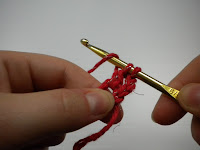Ok, so this is only my second attempt at making Roman Shades. The first one I liked the look of, but I will be making some changes to how I made it too as I work on the ones for my dinning room. so please don't take my word as law, as I am kinda making it up as I go along. I am posting this on here because everything that I can find as to directions are so vague or incomplete that I figured I might be able to helps someone (and I had a girlfriend ask me to tell her how to make shades)
 Supplies:
Supplies:Fabric (I'm using old curtains)
Plastic Rings
Drapery Cord
Thread to Match Fabric
Normal Sewing Supplies
1/4 inch dowel
1x2 board
screw eyes
(the last two create your hardware, with this setup you won't have a cord stop. So if that bit is important to you, you"ll have to order a hardware kit)
Measuring how much fabric you'll need
I purchased the screw eyes, board and dowel at the hardware store, cost half as much as buying it at the craft store.
I know some people are curious as to how much the supplies cost. People make stuff themselves so that they can get them for cheaper right? Well that's not always the case. If you aren't interested in cost just skip over the next paragraph.
My supplies so far cost as such: the 1x2 board which was 8 foot long was about 75cents. The 1/4 inch dowel was in the area of 70cents. The screw eyes were about $1 for a package of 10. The package of 24 plastic rings was about $4. I chose to purchase a package of 24 yards of drapery cord because I knew I would be using that much, and it cost about $7, I believe it was in the area of 40cents a yard if purchased by the yard. The thread was $2.50 a spool. So my supplies (other than the fabric which I'm re-purposing) was about $15.95. Keep in mind that one package of cord, rings, and screw eyes will do more than one shade so the supplies cost will go down a little bit if you are making more than one. I will try to remember to figure out my total cost when I am done so that I can break it down to a per-shade cost.
Hardware Construction:
You can skip this part if you choose to order a hardware kit, or rather I should say you would follow the directions on the hardware kit. I chose to save money and build my own, even though I won't have a fancy cord stop, and will have to wrap the cord around a cup hook. The sacrifice was worth the $15-$20 savings.
Measure your window. If you want the shade to hang past the window, measure how far outside the window you want the shade to go. If you want he shade to hang inside the window, measure inside the window, but keep in mind you need somewhere to screw the 1x2 board into. I chose to hang my shades inside the window because my husband and I have gorgeous wood work in our home that I don't want to cover. Once I had that measurement I subtracted 1/2 inch, just so I know things won't fit too snugly, and the 1/2 will only leave 1/4 open space on each size.
Once you have your measurement, cut the 1x2 to length, and cut the dowel to about 1/2" shorter so that it fits nicely in the channel at the bottom on your shades. If you don't have a saw some hardware stores will cut your lumber down for you, just make sure you measure your windows before you go shopping.

Next you will need to drill pilot holes for the screw eyes and for hanging the shade. The whole for hanging the shade will go into the 2" side of the board and the holes for the screw eyes will go into the 1" side. Your screw eyes are going to have to be directly over your rings, so it is important to measure for them. I have 3 narrow windows (25 inches) so I put one 2 inches in from each side on those. On my wider window (43 inches) I put three, one 2 inches in from each end and a third in the middle. Also you will need one close to whichever end you want to have the cord come out of. That one I put about 1/2 inch in (measurement isn't as important on this one because it doesn't line up with a row of rings.)
Make sure the size your pilot holes correspond to the size of screws you are using. if the whole is too small the screw won't go in easily enough, and if it is too large the threads of the screw won't be able to grab the board.

Finally you can add your screw eyes to your pre-drilled holes. I screwed mine in until you couldn't see the shaft anymore. I just took the picture between getting as far as I could with my hands and starting to twist them with a pliers.
Now your hardware is completed!
Roman Shades: Hemming and Adding Rings
Roman Shades: Final Assembly
Roman Shades: Hardware Modification and No-Sew Methods
























